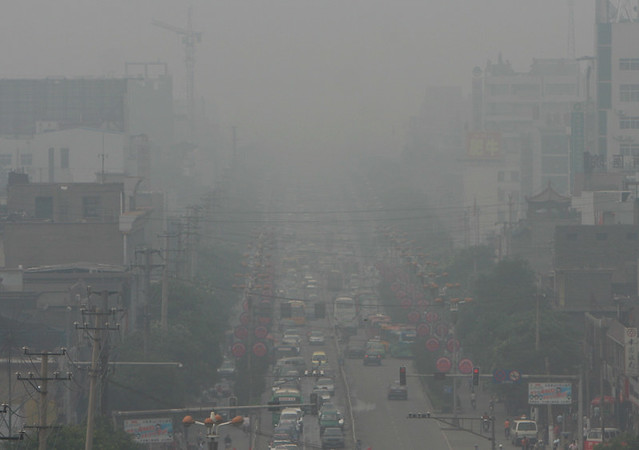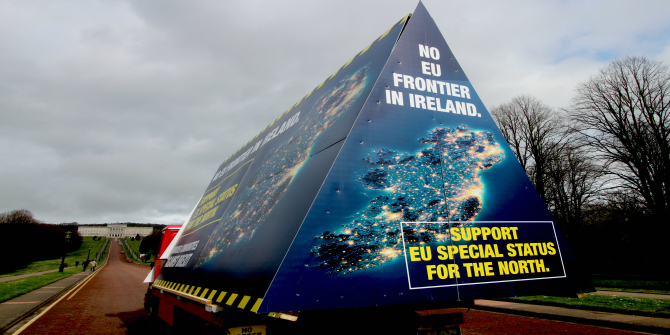
10 Billion aims to take a dramatic look at the challenges we face today, from over-population to energy wars, to melting ice caps to civil conflict, presented in an eye-catching infographic style. Stephen Emmott has attempted to obtain reach and for all the criticism of his method and writing, it is not as though he is pretending that this would make it in to a journal, an article for which he is more than capable of writing. Science communication is never easy, writes Kate Saffin, and if Emmott reaches those that others have not then the book will have been a worthwhile endeavour.
 10 Billion. Stephen Emmott. Penguin. July 2013.
10 Billion. Stephen Emmott. Penguin. July 2013.
Stephen Emmott is Head of Computational Science at Microsoft, where he leads a diverse team of scientists aiming to develop new thinking, new computational methods, and new software tools across a range of highly interdisciplinary research programmes, to tackle fundamental problems in science in areas of societal importance. Emmott is also Visiting Professor of Computational Science at the University of Oxford, and Visiting Professor of Biological Computation at University College London.
Last year Emmott collaborated with the theatre director Katie Mitchell to bring a play of the same name as this book to the Royal Court theatre in London. It took the form of a lecture with presentation slides, and by all accounts people including critics left the theatre informed and worried about the effect of rising population and the stress the planet is under, if a little hopeless about the lack of options. In interviews, Emmott has stated that he was encouraged to bring the same message to a much wider audience than that that could have seen the production, and this book is the result.
The book does indeed often read like a script, or maybe as the notes to accompany his previous lecture, with just a few lines on the top of each page. I’m sure that this is supposed to achieve dramatic effect and to make the book more approachable to a wider audience. However this style is not only stilted – particularly at the beginning of the book where one has to turn back frequently to try and understand the flow of the narrative – but makes the gross grammatical errors and frequent repetitions in the text all the more striking. I can imagine that a lot of readers would be put off continuing. Furthermore a lot of the facts and figures that are thrown out at the reader seem unsubstantiated and alarmist and some of the references are obscure and difficult to look up. A notable point is when Emmott suggests that there may not be just ten billion of us by the end of the century, as his title suggests, but our numbers could have swelled to twenty- eight billion by then. It is statements like these, seemingly arriving from nowhere, that colour the rest of the book, and take little account of the complex nature of the future population of Earth, where some countries will have falling populations as the birth rates already dip below the replacement rate, and other countries populations will increase as their healthcare levels and other indicators improve.
This is a shame as the essence of the book is relevant and important – that the population is rising and as a species we have already changed and damaged ecosystems more than we have ever done in the past and we do not know what effect this will have on our lives. A poignant way of emphasising this to the reader is Emmott’s phrase, “The biggest and most important experiment on Earth is the one we’re all conducting, right now, on Earth itself”, as is the useful reminder that “right now, every leaf on every tree on Earth is experiencing a level of CO2 that the planet has not experienced for millions of years”.
A couple of the most interesting points that Emmott raises are how he regularly sees military representatives at scientific conferences now, suggesting that they are planning for the effects on security that population and climate changes will have. Emmott also highlights the fact that “the term climate migrant is one we will increasingly have to get used to”.
Emmott presents a lot of information with a tag that might be easy for someone to remember in a later conversation, such as in reference to land grabbing. “During the past twelve years, almost 50 million hectares of land have been traded. That is an area of land the size of half of Western Europe being bought and sold to foreign governments and businesses.” The scale of the potential catastrophe of melting ice-shelves and tundra is successfully delivered with the warning that “For the first time hundreds of plumes of methane – many of them kilometres across – have been observed rising from the previously frozen methane stores in the Laptev Sea, off the East Siberian Artic shelf” and that “…the release of this methane could go on for centuries, and we will be completely unable to stop it”. Emmott suggests that, “Siberia thawing would turn Russia into a remarkable economic and political force this century because of its newly uncovered mineral, agricultural and energy resources.”

Over the course of the book, Emmott scantily and rapidly covers many topics including: the history of the population increase; the agricultural revolution; the green revolution; the water crisis including ocean warming; land use and land grabbing; habitat and biodiversity loss; commercial meat production and fishing; the use of fossil fuels; the problem with car use and other transport; the carbon cycle; deforestation; desertification; extreme weather; flu pandemics; and food prices and their link to the Arab Spring. He tends to jump back and forth though, and again his use of research, data, and narrative could end up detracting from the cause and easily fuel the arguments of sceptics.
This is less a book about population, but rather one about how everything is going wrong. The book does not mention any past or current successes or any lines of research, which might improve matters, instead rashly referring to previous efforts as failures, with no attempt to explain what he means. He culminates with sentences such as (in a larger font) “Every which way you look at it, a planet of ten billion looks like a nightmare.”
Interestingly though, Emmott does not really call for more reproduction controls, stating that “Saying don’t have children is utterly ridiculous. It contradicts every genetically coded piece of information we contain, and one of the most important (and fun) impulses we have”. He rather (obviously) proposes that the options to improve use of resources – and therefore to accommodate the population increase – are to either develop technology or instigate radical behaviour changes. He doesn’t think that either will work out, because the technologies aren’t being developed properly and because behaviour change at such a scale would need the help of governments and he rightly doesn’t see any evidence that that will happen. He reminds us of the various UN committees charged with protecting the planet, to little effect, and of the international summits that fail to secure meaningful pledges and commitments. Emmott also discusses the charge of consumerism and the nature of corporations built for unending growth as crucial parts of the problem, and it is really his despondency that politicians are unwilling to seem unpopular and that a “radical transformation of corporate culture” is very unlikely to happen that leads him to one of his final sentences: “I think we’re fucked”.
It may be that Professor Emmott has written in this way to try and get the attention of the groups of people he is criticising, and that he feels have little understanding of the current problem. I recently saw the book for sale in an arts establishment, and I think this is the point. Emmott has attempted to obtain reach and for all the criticism of his method and writing, it is not as though he is pretending that this would make it in to a journal, an article for which he is more than capable of writing. No-one can claim that science communication is easy, and no doubt such a jumpy narrative could have been reconsidered, but if Emmott reaches those that others have not then the book will have been a worthwhile endeavour.
The book will be particularly interesting to those studying or practising science communication, and could well appeal to those from a broad range of backgrounds.
——————————
Dr Kate Saffin has worked as a medical doctor in London, Sydney and Paris and is a qualified General Practitioner. Most recently she completed the Masters in Public Health at King’s College London and has subsequently worked for a think tank and as a freelance researcher in public and health policy. She recently worked in a policy role for a UK government department. Her research interests lie in international development and the intersections between health, the environment, economics and politics. Read reviews by Kate.








2 Comments